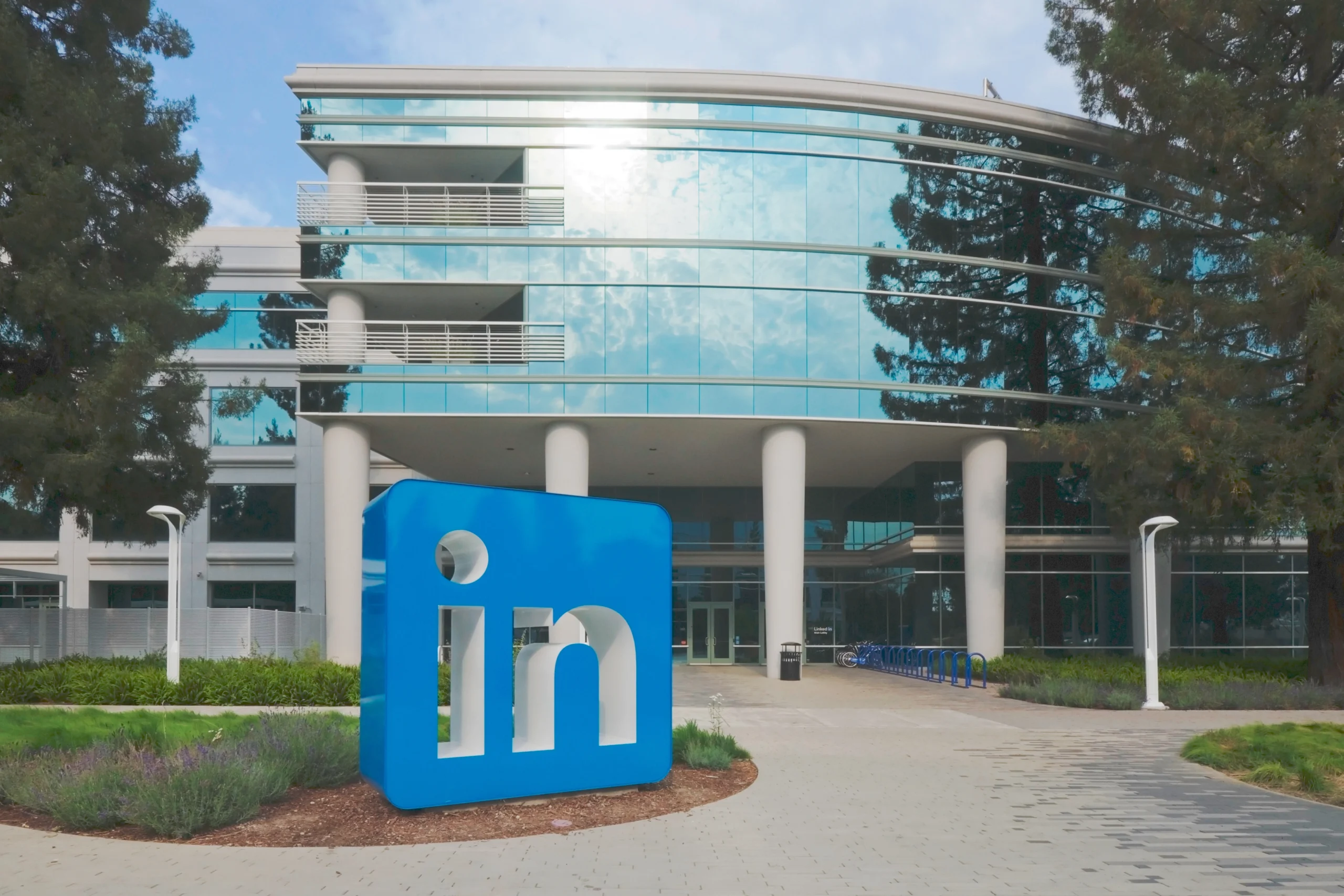
LinkedIn is a powerful professional networking platform that has transformed the way individuals connect, share, and advance their careers. Since its inception in 2003, LinkedIn has grown significantly, boasting hundreds of millions of users worldwide. It serves as a vital resource for job seekers, employers, and professionals looking to network, share insights, and enhance their skills. The following trivia highlights key facts and figures that illustrate LinkedIn’s impact and evolution in the professional landscape.
Founded: LinkedIn was founded on December 28, 2002, by Reid Hoffman along with co-founders Allen Blue, Konstantin Guericke, Eric Ly, and Jean-Luc Vaillant. The idea was to create a professional networking platform that would allow individuals to connect and share their professional experiences. Hoffman, who had previously worked at PayPal, recognized the need for a dedicated space for professionals to network online, which led to the inception of LinkedIn.
Launch Date: The platform officially launched to the public on May 5, 2003. Initially, it started with a modest user base of around 4,500 members. The launch marked a significant milestone in the evolution of social networking, focusing specifically on professional relationships rather than personal connections, which were the primary focus of other platforms at the time.
Acquisition: Microsoft acquired LinkedIn for approximately $26.2 billion in June 2016, marking one of the largest tech acquisitions in history. The deal was seen as a strategic move by Microsoft to integrate LinkedIn’s vast network and data into its suite of products, enhancing its offerings in areas such as productivity and business intelligence. The acquisition was finalized on December 8, 2016, and has since led to the integration of LinkedIn features into Microsoft Office products.
User Base: As of 2023, LinkedIn boasts over 930 million members globally, making it one of the largest professional networking sites in the world. This extensive user base includes professionals from various industries, job seekers, recruiters, and companies looking to connect with talent. The growth of LinkedIn’s user base reflects the increasing importance of online networking in the professional world.
Countries: LinkedIn is accessible in over 200 countries and territories, which underscores its global reach and appeal. This international presence allows users from diverse backgrounds and professions to connect, share insights, and explore job opportunities, fostering a truly global professional community.
Languages: The platform supports 24 languages, making it accessible to a wide range of users around the world. This multilingual capability is crucial for facilitating communication among professionals from different linguistic backgrounds and enhancing the user experience for non-English speakers.
Employees: LinkedIn has grown to employ over 20,000 individuals globally. The workforce is diverse and includes professionals from various fields such as engineering, marketing, sales, and human resources. The company culture emphasizes collaboration, innovation, and inclusivity, which has contributed to its reputation as a desirable place to work.
Job Listings: With more than 20 million job listings available on LinkedIn, the platform serves as a vital resource for job seekers and employers alike. Companies can post job openings, while users can search for opportunities that match their skills and interests. This feature has made LinkedIn a go-to platform for recruitment and career advancement.
Connections: Users on LinkedIn can have up to 30,000 connections on their profile. This limit allows for extensive networking opportunities, enabling users to connect with colleagues, industry leaders, and other professionals. The ability to build a large network is essential for career growth and can lead to new job opportunities and collaborations.
Daily Engagement: Over 1 million users post on LinkedIn every day, contributing to a vibrant and dynamic community. This daily engagement includes sharing articles, insights, job postings, and professional achievements, which helps to keep the platform active and relevant. The high level of interaction fosters networking opportunities and knowledge sharing among users.
Content Views: LinkedIn users generate more than 9 billion content impressions per week. This staggering figure highlights the platform’s role as a significant channel for professional content sharing and consumption. Users engage with posts, articles, and updates from their connections, companies, and influencers, contributing to a continuous flow of information. The high volume of content views demonstrates the platform’s effectiveness in fostering discussions, sharing industry knowledge, and enhancing professional visibility.
Company Pages: There are over 61 million company pages on LinkedIn. These pages serve as a digital storefront for organizations, allowing them to showcase their brand, culture, and job opportunities. Companies use their pages to engage with followers, share updates, and post job listings, making it easier for potential employees to learn about their values and work environment. The presence of millions of company pages indicates LinkedIn’s importance as a recruitment and branding tool for businesses of all sizes.
Profiles: More than 40% of LinkedIn users check their profile daily. This frequent engagement reflects the platform’s significance in users’ professional lives, as they monitor their connections, interact with content, and update their profiles to reflect new skills or experiences. Regularly checking profiles allows users to stay informed about industry trends and maintain active networking relationships, which are crucial for career development.
Influencer Program: The LinkedIn Influencer program launched in 2012, featuring notable figures who share insights and expertise with the LinkedIn community. This initiative has attracted high-profile individuals from various industries, including business leaders, authors, and thought leaders, who contribute valuable content. The program has helped elevate the quality of discussions on the platform and provides users with access to expert opinions and industry trends.
Mobile Usage: Approximately 57% of LinkedIn traffic comes from mobile devices. This statistic underscores the importance of mobile accessibility in today’s digital landscape, as professionals increasingly rely on smartphones and tablets to stay connected and informed. LinkedIn’s mobile app allows users to access their networks, browse job listings, and engage with content on the go, enhancing the platform’s usability and reach.
Top Industries: The most popular industries on LinkedIn include information technology, financial services, and healthcare. These sectors dominate the platform, reflecting current job market trends and the demand for skilled professionals in these fields. Users in these industries benefit from networking opportunities, job postings, and industry-specific content, making LinkedIn a valuable resource for career advancement.
LinkedIn Learning: Launched in 2015, LinkedIn Learning offers over 16,000 courses across various subjects, including technology, business, and creative skills. This platform provides users with access to high-quality educational content, enabling them to enhance their skills and stay competitive in the job market. The integration of LinkedIn Learning into user profiles also allows individuals to showcase completed courses and certifications, further enhancing their professional credentials.
B2B Marketing: LinkedIn is considered the most effective social media platform for B2B marketing, with 97% of marketers using it. The platform’s professional focus allows businesses to connect with decision-makers and industry professionals, making it an ideal venue for targeted marketing campaigns. LinkedIn’s advertising tools and analytics enable companies to reach their desired audience effectively, driving brand awareness and lead generation.
Sales Navigator: LinkedIn Sales Navigator, a premium tool for sales professionals, was launched in 2014. This tool provides advanced search features, lead recommendations, and insights into potential customers, helping sales teams identify and connect with prospects more effectively. The Sales Navigator has become an essential resource for businesses looking to leverage LinkedIn’s vast network for sales opportunities and relationship building.
Skill Endorsements: Users can endorse each other’s skills, with over 1 billion endorsements made. This feature allows professionals to validate each other’s expertise, enhancing credibility and visibility on the platform. Skill endorsements help users highlight their strengths and can lead to increased job opportunities as recruiters often look for specific skills when searching for candidates. The endorsement system fosters a sense of community and support among professionals.
Groups: There are more than 2 million LinkedIn groups available for users to join. These groups serve as forums for professionals to connect over shared interests, industries, or topics. Members can engage in discussions, share resources, and network with like-minded individuals. The diversity of groups allows users to find communities that align with their professional goals, making LinkedIn a valuable platform for building relationships and exchanging ideas within specific fields.
Video Content: LinkedIn has seen a 200% increase in video content consumption year-over-year. This growth reflects the rising popularity of video as a medium for communication and engagement in professional settings. Users leverage video to share insights, showcase projects, and provide tutorials, making the platform more dynamic and interactive. The increase in video content consumption highlights LinkedIn’s adaptation to user preferences and the importance of engaging visual content in professional networking.
Diversity: As of 2020, LinkedIn reported that 47% of its workforce identified as women. This statistic underscores the company’s commitment to promoting diversity and inclusion within its workforce. LinkedIn has implemented various initiatives aimed at fostering an inclusive environment, which not only enhances employee satisfaction but also drives innovation and better decision-making. A diverse workforce is essential for understanding and meeting the needs of LinkedIn’s global user base.
Annual Revenue: LinkedIn generated approximately $10 billion in revenue in 2021. This figure reflects the platform’s success in monetizing its services through premium subscriptions, advertising, and recruitment solutions. The steady revenue growth illustrates LinkedIn’s strong position in the market as a leading professional networking site and its ability to attract businesses looking to leverage its vast user base for marketing and recruitment purposes.
User Growth: LinkedIn has grown from 100 million users in 2011 to over 930 million in 2023. This remarkable increase in user base demonstrates the platform’s expanding influence and relevance in the professional world. The growth can be attributed to the increasing importance of online networking, the rise of remote work, and LinkedIn’s continuous innovation in features and services that cater to the needs of professionals and businesses alike. This trajectory positions LinkedIn as a crucial tool for career development and professional networking.
Frequently Asked Questions About LinkedIn
General Information
1. What is LinkedIn?
- LinkedIn is a professional networking platform designed to help people connect with other professionals, find jobs, and build their careers. It’s a popular tool for businesses to recruit talent, network with other companies, and promote their brand.
2. Who can use LinkedIn?
- Anyone with a professional profile can use LinkedIn. It’s particularly useful for individuals seeking employment, freelancers, entrepreneurs, and professionals in various industries.
3. How does LinkedIn work?
- LinkedIn allows users to create a profile showcasing their skills, experience, education, and professional achievements. Users can connect with other professionals in their network, join groups, and follow companies. They can also search for jobs, apply to positions, and receive job recommendations.
Creating and Maintaining a LinkedIn Profile
1. How do I create a LinkedIn profile?
- To create a LinkedIn profile, you’ll need to provide basic information such as your name, email address, and password. You can then add details about your work experience, education, skills, and interests.
2. What information should I include in my LinkedIn profile?
- Your LinkedIn profile should be comprehensive and informative. Include your current and past job titles, company names, responsibilities, and achievements. Highlight your skills, certifications, and education. Use a professional headshot as your profile picture.
3. How can I make my LinkedIn profile stand out?
- To make your LinkedIn profile stand out, use keywords relevant to your industry, write a compelling summary, and personalize your profile. Join relevant groups and participate in discussions. Also, ask for recommendations from colleagues and past employers.
Networking and Job Searching
1. How can I network on LinkedIn?
- Connect with people in your industry, join relevant groups, and participate in discussions. Engage with other users by liking, commenting, and sharing their posts. Attend industry events and connect with people you meet there.
2. How can I find jobs on LinkedIn?
- LinkedIn has a powerful job search feature. You can search for jobs by keyword, location, company, and industry. Use filters to narrow down your search and apply directly to jobs through the platform.
3. How can I use LinkedIn to build my personal brand?
- Share your expertise by writing articles, publishing posts, and participating in discussions. Build relationships with influencers in your industry. Use LinkedIn to showcase your projects, accomplishments, and thought leadership.
Advanced Features and Tips
1. What is LinkedIn Premium?
- LinkedIn Premium is a paid subscription that offers additional features, such as InMail credits, advanced search options, and career insights.
2. How can I use LinkedIn Analytics?
- LinkedIn Analytics provides insights into your profile views, engagement, and audience demographics. Use this data to optimize your profile and content.
3. What are some common LinkedIn mistakes to avoid?
- Avoid spamming connections, using unprofessional language, and neglecting to update your profile regularly. Be mindful of your privacy settings and avoid sharing sensitive information.
4. How can I stay active and engaged on LinkedIn?
- Post regularly, comment on other people’s posts, and join relevant groups. Attend industry events and connect with people you meet there. Keep your profile up-to-date and respond to messages promptly.









